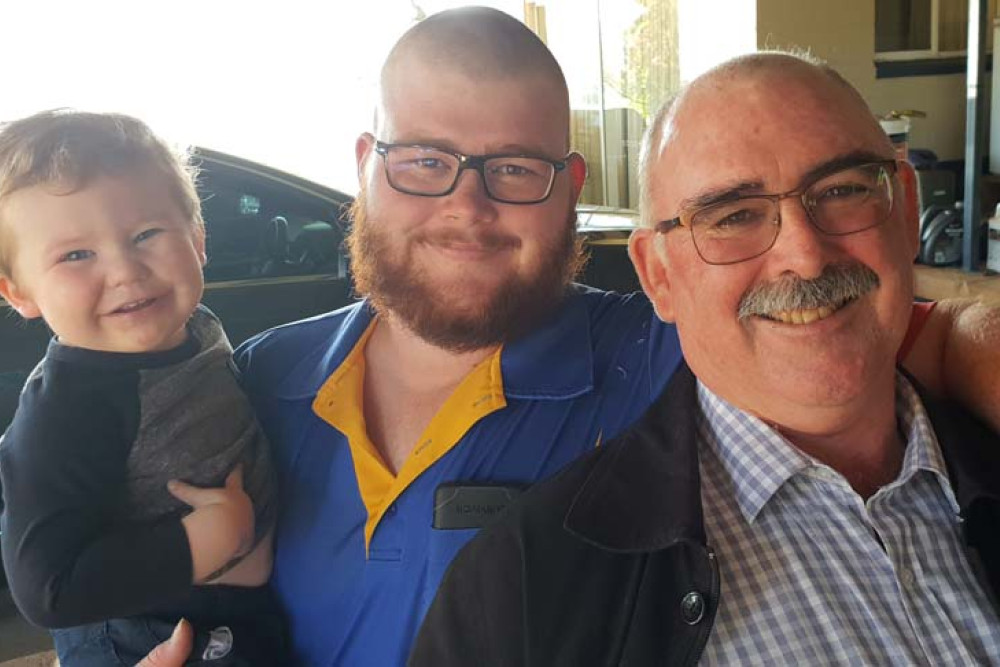On The Land
30 May, 2024
The Tablelands dairy evolution
AS we approach World Milk Day on 1 June, it's an opportune time to reflect on the changes which have taken place in the dairy industry on the Atherton Tablelands.

Former dairy farmer and director of the Malanda Dairy Co-operative John Reynolds said one of the major changes had been the serious inflation of the value of land in the region.
“Before, farmers could buy adjoining land to expand, now the incentive has been taken away from farmers,” John said.
“The second biggest change, as I see it, has been the increasing age of dairy farmers.”
Dairying started on the Atherton Tablelands in the early 1900’s and according to EastAUSmilk District councillor and fourth generation Millaa Millaa dairy farmer, James Geraghty there has been many changes over the years.
“As there were few shops and no refrigeration, milk had to be procured and used in a timely fashion, therefore it had to be produced very close to where it was used,” James said.
“There were many, many small processing plants and groups of farmers producing dairy products - mainly cream, butter, cheese and raw milk.
“The Malanda factory started in 1919. The arrival of the US military on the Tableland in 1942 changed the industry.
“They wanted liquid milk and they wanted it pasteurized, so the industry accommodated them.”

There were 300,000 Australian and US soldiers stationed on the Tablelands during WWII.
Over the years, as farms grew in size, certain well-known dairy factories such as Ravenshoe, Evelyn, Golden Grove, Silvermist, Millaa Millaa and Malanda rose to prominence in the region.
“By 1972, just Millaa Millaa and Malanda were left, they decided to join forces and formed the Atherton Tableland Co-operative Dairy Association - I remember doing a school trip to Millaa factory in the early ‘70s,” James said.
“Millaa had started the “Longest Milk run in the World” in 1972, the unrefrigerated trucks left Millaa Millaa, went via Townsville, Mt Isa and on to Darwin.
“Then deregulation was implemented on 1 July 2000. The industry suffered immensely, the market milk price, the price that we got for the milk that went into a bottle, dropped from 58 cents/litre to 44 cents/litre overnight and dropped again later.
“The end of regulation in Queensland allowed the start-up of micro-processors, mainly on-farm, like Mungalli Creek Dairy at Millaa Millaa.
“Mungalli currently has eight suppliers who use the same dairy supportive businesses as the Malanda suppliers – a very important part of the industry.
“The School milk scheme was a government plan to make sure kids got enough milk in their diet and put a large part of a generation off milk for life.
“It would be delivered to the school and allowed to sit in the sun for an hour before the kids were sent out to drink it at little lunch.”
With the joining together of the Malanda and Millaa Millaa farmers, the Tablelands came to be known for Malanda Milk and Millaa Millaa Cheese, names synonymous with quality products and always associated with the Longest Milk run in the World.
The factory in Malanda was expanded over time to produce fresh milk, modified milks, flavoured milks, cream, dollop cream and casein.
In 1936, there were 1159 dairy farmers on the Atherton Tablelands (pers.comm. Ash Hanley).
“By the time I entered the industry in 1981, there were 268 farmers supplying the Malanda factory,” James said.
“In 1997, a joint venture was established with Australian Capital Foods - a NSW co-operative that had been around since the late 1800’s. This changed to a full amalgamation a few years later.”
At one stage, Kosher Casein was produced at the Malanda factory.
“Over a period, National Foods sold to San Miguel, a Philippines brewing company, they sold to Lion Brewing, a Japanese brewer,” James said.
“Lion was a processor in the industry at a tough time - they were not a dairy business, they rationalized their business, again and again and again.”
Lion sold to Bega about three years ago.
“Bega has been a breath of fresh air,” James said.
“They have indicated they want more milk, when asked if there could be a penalty for producing too much, they said ‘you are the farmers, go produce the milk, we are the processor, we will find a use for it’.”
Currently the Malanda factory has 35 farms producing about 38 million litres per year.
“We have a farm that started up 18 months ago, another one that started up a few months ago and another one that will start in the next month or so,” James said.
“We have a couple of interested people that we are trying to find somewhere to start up.
“Dairy has a large flow through to the community - back in the 80s and 90s, for every dollar a farmer spent, it went through the community five times, back a few years a multiplier effect of 4.5 was being used.
“On the Tableland we have farms that have supplied milk for 50 years, 75 years, 90 years and over 100 years.
“We received a great price rise two years ago, another slight rise last year. The price is a lot better than it has been.
“When a farmer decides to leave, we need his farm to stay - either leased, sold or managed. We need new farms. We need to get to 50 farms and to increase production. We need to make dairying a business that people want to get into.”


